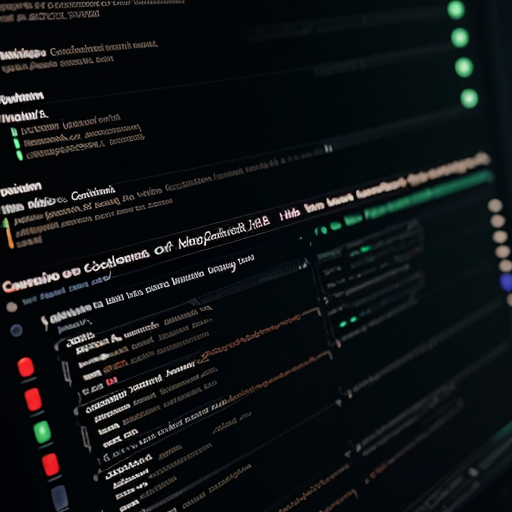Ah, CI/CD pipelines—the heartbeat of every modern software engineer’s dream. There’s something intoxicating about the hum of a well-oiled Continuous Integration/Continuous Deployment (CI/CD) system. It’s like watching a symphony of code and infrastructure perform in perfect harmony, delivering product updates with zero downtime and zero coffee spills (okay, maybe one). The Career Readiness Report? Well, that’s my magnum opus, and let me tell you—it’s slick. A SaaS solution that now helps over a dozen schools better prepare students for the job market, and I had the pleasure of building it from the ground up.
Enter the Code: My Digital Symphony
Let’s start at the heart of the system: the codebase. It’s clean, modular, and built with a focus on scalability. We’re not talking about spaghetti code here—this is high-performance linguine. The Career Readiness Report isn’t your average, everyday school admin tool. It’s a custom-built solution with a little bit of AI magic, a ton of backend prowess, and an API architecture that would make REST itself take a bow.
But here’s the kicker: thanks to the CI/CD pipeline, new features are rolling out faster than you can say npm install. From the moment a line of code leaves my IDE, it embarks on a fully automated journey through code reviews, testing environments, and finally into production with zero manual intervention. Zero. It’s like watching an elite SWAT team of Docker containers, YAML files, and GitLab runners deploy precision strikes across my Kubernetes clusters.
The CI/CD Pipeline: My Code’s Journey to Stardom
- Code Commit – It all begins with a humble
git push. A whisper in the dark, a flutter of bytes across the digital ether. Little does that commit know it’s about to embark on a hero’s journey. - Build & Test – Jenkins or GitLab CI swoops in, running a battery of automated tests on every commit. It’s like running code through a digital bootcamp where the weak get kicked to the curb (aka rejected pull requests) and only the strongest make it out alive.
- Dockerization – In a world where apps need to run consistently across various environments, Docker is the universal translator. My app is meticulously packed into containers, ensuring that whether it’s running in dev, staging, or production, it operates like clockwork.
- Staging Environment – Ah, the calm before the storm. My team and I (okay, mostly me) run some final checks, making sure the latest version is smooth as butter. There’s nothing more satisfying than seeing a seamless transition from dev to stage.
- Production Push – Here we go! With a few lines of Ansible or Helm charts, the deployment is pushed live. This is the moment of glory—no downtime, no disruptions. It’s as if the deployment ninjas slid through the server rooms, leaving no trace but pure functionality.
- Monitoring & Feedback – Once it’s live, we don’t sit back. Tools like Grafana and Prometheus are always on patrol, ensuring that any anomaly is flagged and dealt with before the users even realize something’s up.
Why It Matters to Students and Schools
This isn’t just some hobby project that lives in the cloud collecting digital dust. Schools love the Career Readiness Report because it’s easy for them to track how well their students are prepared for the job market. From skills assessments to career development resources, it’s all in there. Students? They’re armed with insights, data, and action items that propel them toward success. It’s a win for everyone, and honestly, a win for me too—because let’s face it, nothing feels better than seeing something you built make a real-world impact.
What’s Next?
What’s the next feature rolling down the CI/CD pipeline? Well, let’s just say AI is about to take center stage, with machine learning algorithms predicting career success rates based on student engagement. Schools are already on the edge of their seats.
If you’re wondering what powers this brainchild of mine, here’s the tech stack: a beautiful concoction of Python, Flask for the backend, React for the frontend, and Kubernetes for container orchestration. The database? MongoDB—it’s NoSQL bliss. And when it comes to scalability, Amazon Web Services (AWS) handles the heavy lifting.
The Subtle Plug (But Not Really)
This is where I have to mention that, in the world of software, nothing feels quite as satisfying as delivering solutions that make lives easier while running on an optimized, robust architecture. And if I’m being honest, I wouldn’t mind lending my expertise to even larger-scale projects.
Recruiters, you know where to find me.
TL;DR
Building the Career Readiness Report was like conducting a high-tech symphony, with CI/CD as the conductor, Docker containers as the orchestra, and the students/schools benefiting from the performance. The code’s modular, the process is seamless, and the impact is real. And hey, if your organization needs a little of that CI/CD magic (with a side of career development for students), let’s talk!




